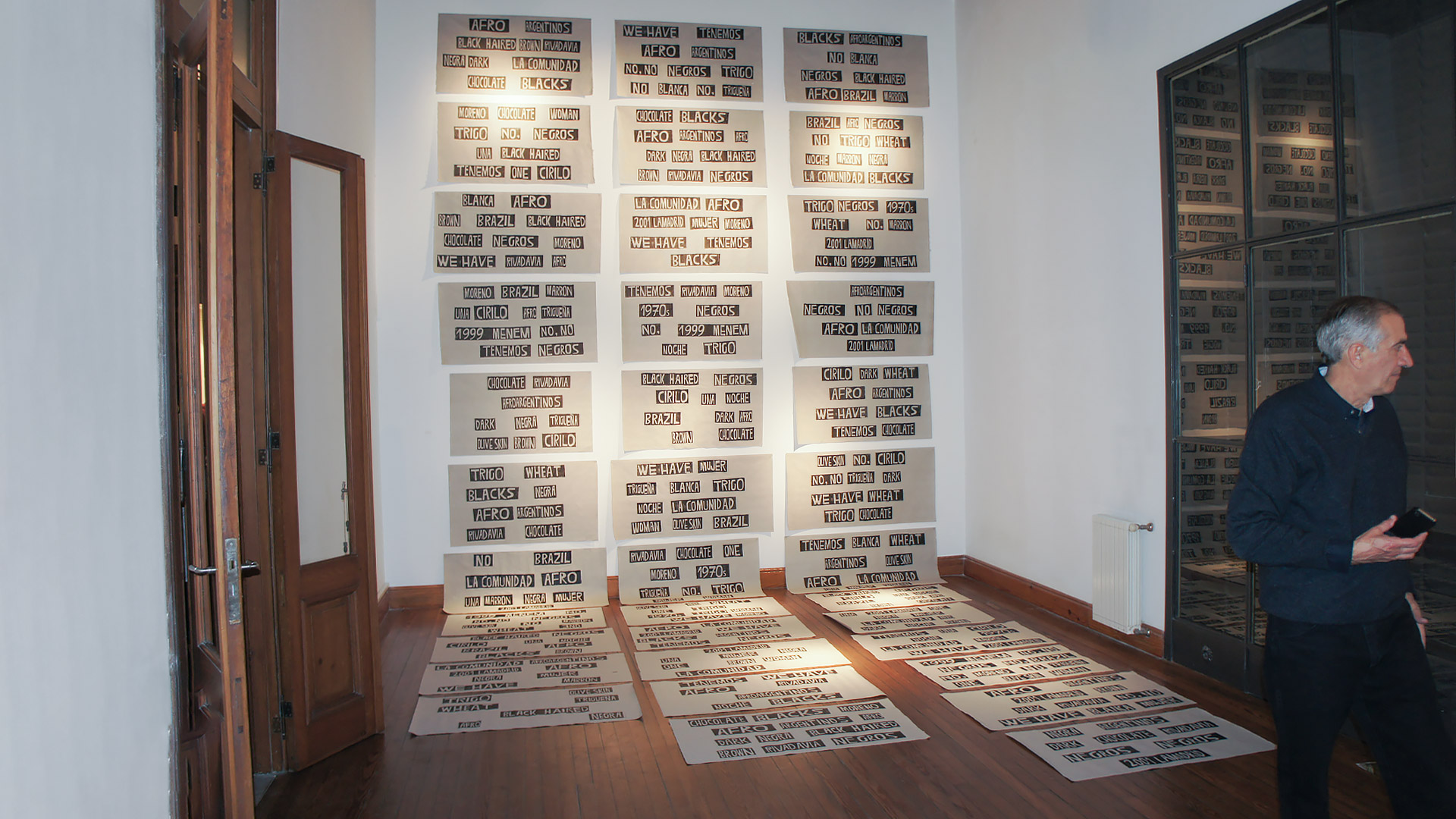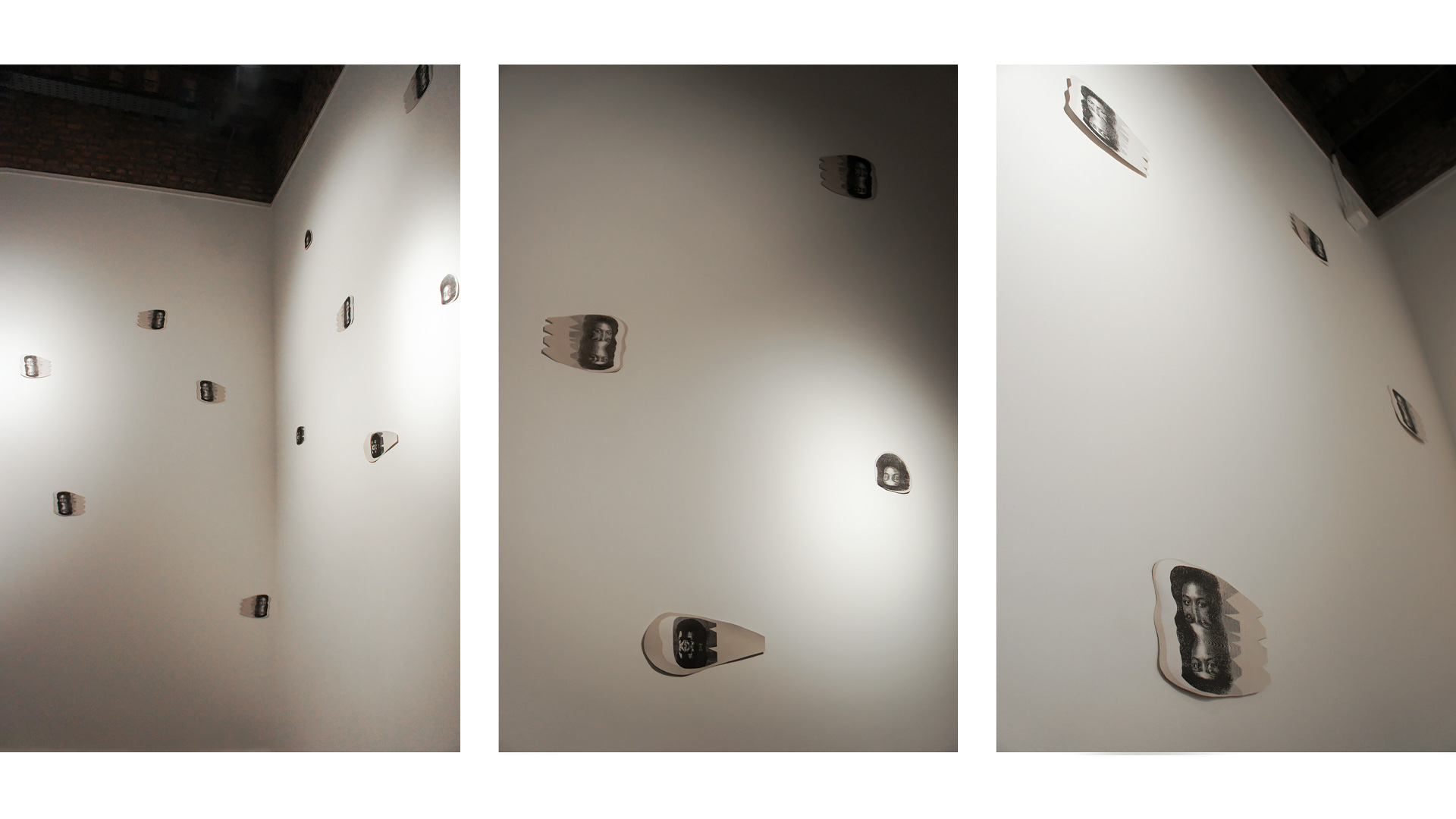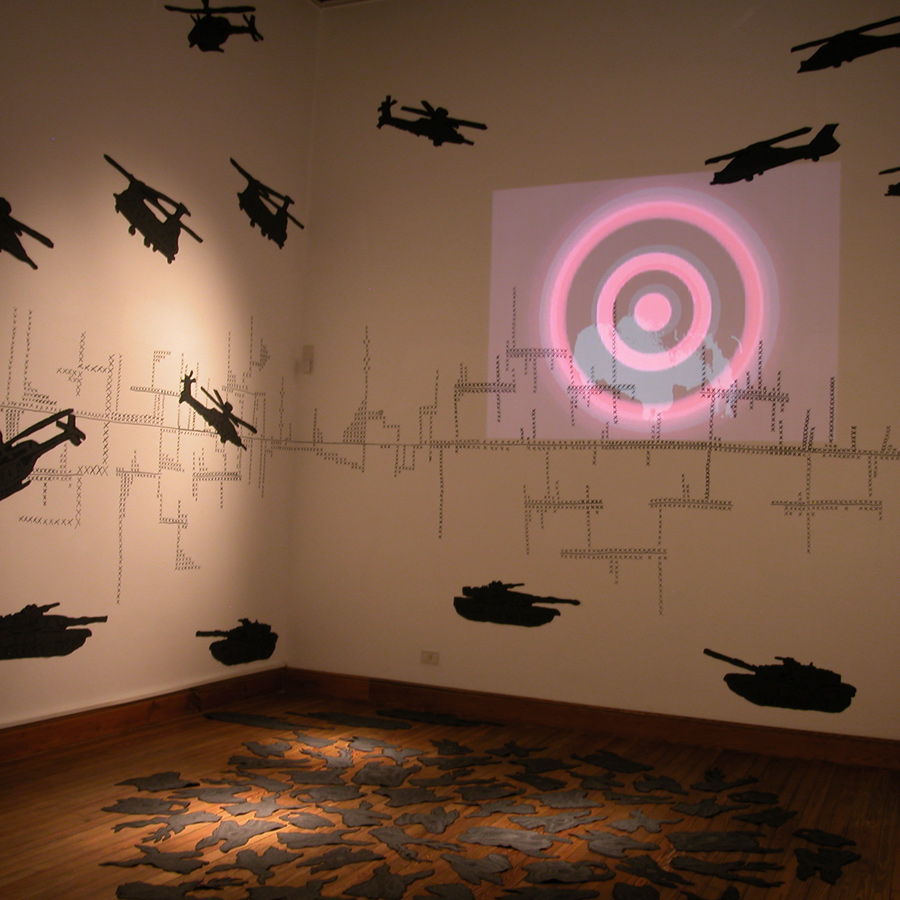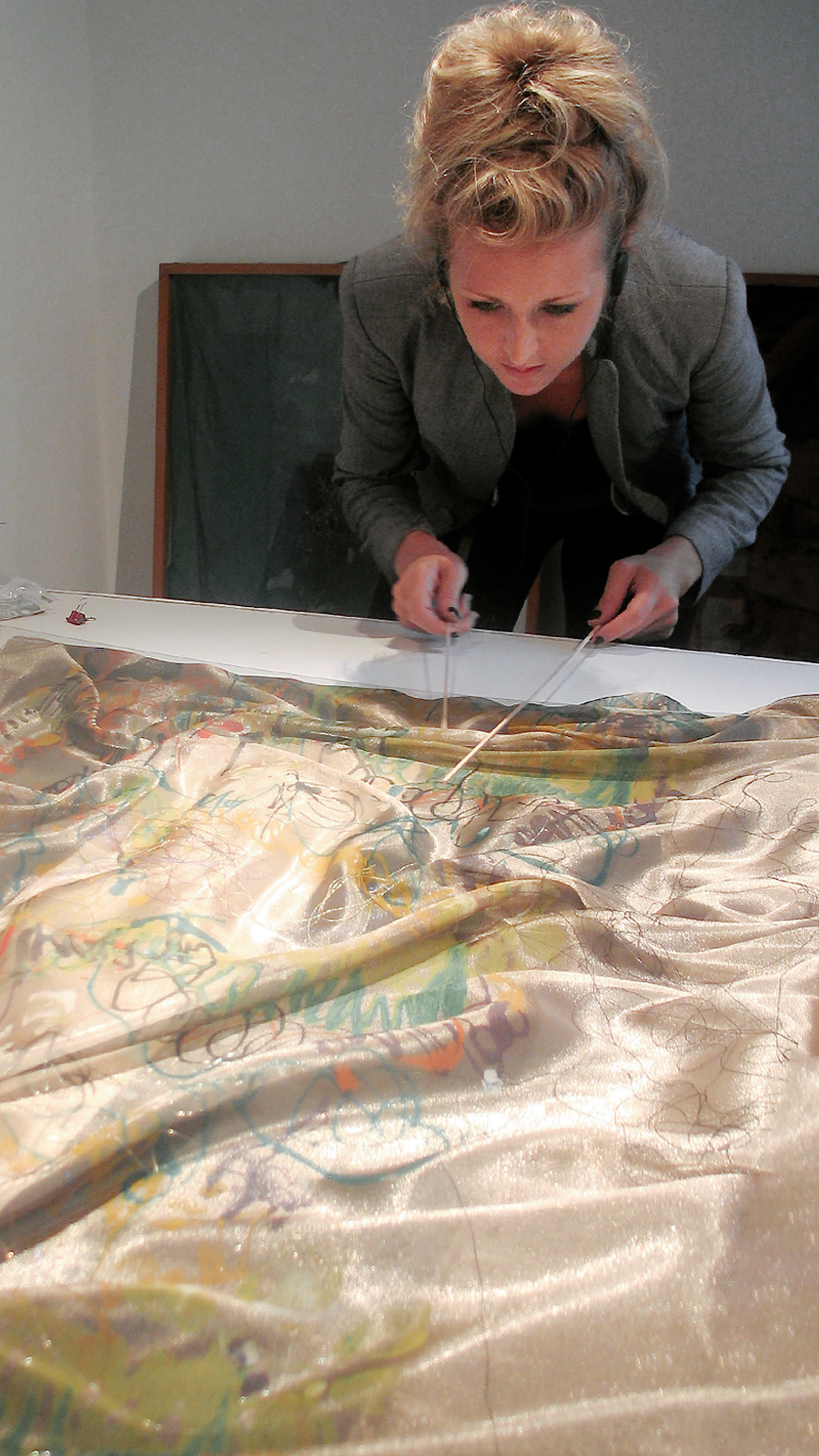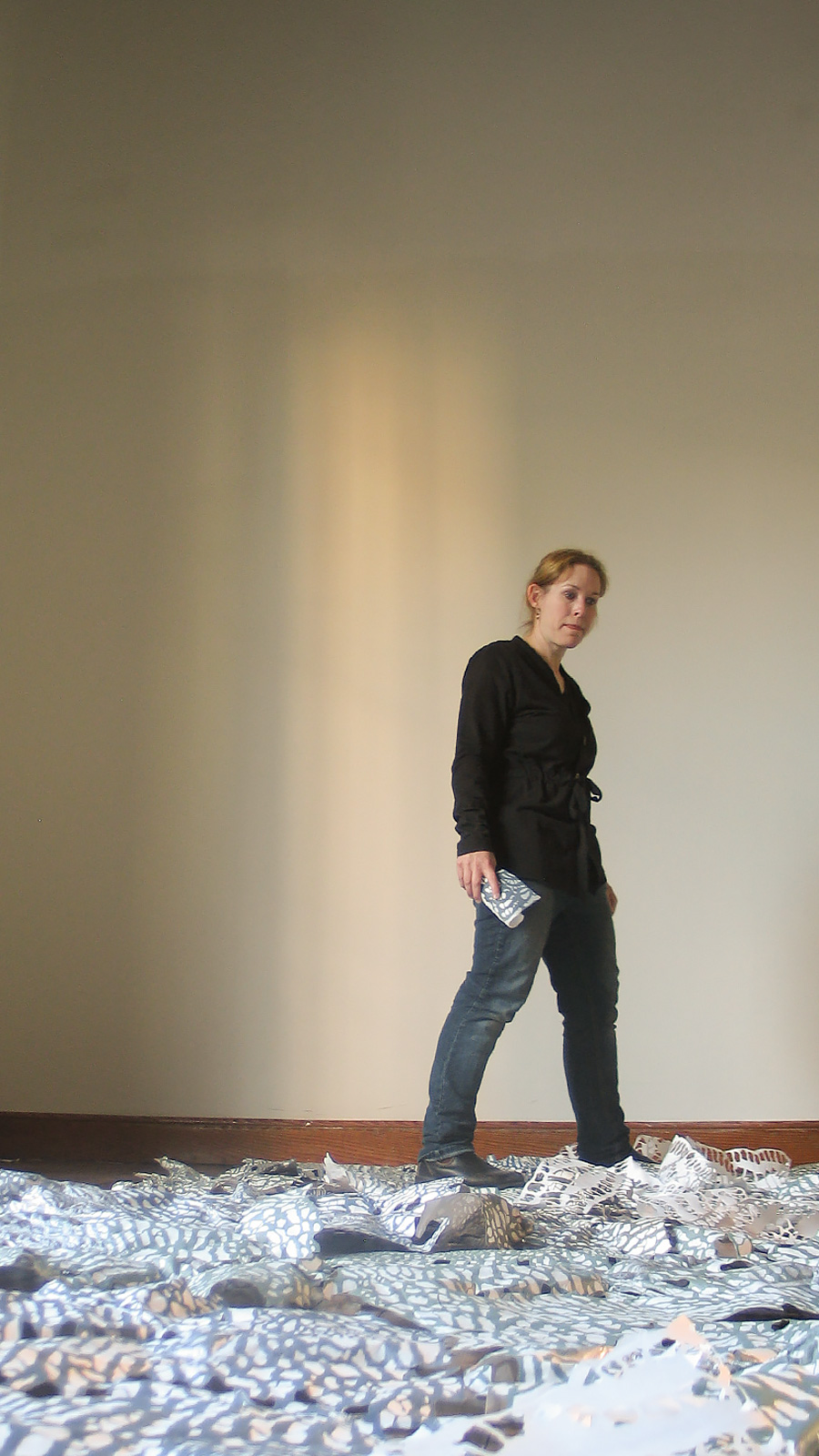Activities
´aceNITE, Exhibitions
Change
Ayanah Moor
10.08.11 16.09.11
Change (by Alicia Candini)
Was there a political plan to “whiten” the population of Argentina? When we, Argentines, quickly clarify that we are descendants of Europeans, would we recognize with equal haste our black roots? What events experienced the disappearance of the black race within our population? What role does the Paraguayan War have in this process?
These and other questions were raised by the artist during his residence in Buenos Aires. The result is an impressive installation in the Polyglot Room where Ayanah reflects on the “blackness” in Argentina – citing both remote and very close events – that raises uncomfortable questions, although they need answers.
Change (by Ayanah Moor)
My work is often born in response to an existing idea. For this residency, I made the decision to digitally alter figurative images to turn them into something new. I wanted to work on the body and its abstraction, specifically the black body and create a new meaning. At first, I didn’t know for sure what this new meaning was going to be. Walking through the streets of Buenos Aires, meeting Argentines and reading about the local culture, I was impressed by the small number of black people who live in this country.
In my research, I found multiple debates about the possible reasons why the presence of Argentine descendants of black ancestors is very limited. Some speak of the role of the Triple Alliance War, where many of the front lines of soldiers were black. Others cite mixed-race relationships with European immigrants. Countless historians demonstrate the racial genocide carried out by Argentine governments. Undoubtedly, a combination of several of these factors has led to the dramatic reduction of the “Afro Argentina” community (understood by this black population resulting from slavery during Spanish colonial rule).
This historical complexity made me repeat the abstraction of the black figure as I did at the beginning of my residence in ace, beginning to interpret my changing portraits of blacks differently, also taking into account new cultural terms to refer to the complicated identity argentina: trigueña = olive-colored skin; wheat = wheat (cereal) – colored skin.
This is where I wonder if any Argentine recognizes his Spanish heritage and / or Italian recognizes an African descent. Some texts in this work were found at a quote from former Argentine President Carlos Menem, who asked him during a tour in the United States if Argentina had citizens of African descent. He replied: “No, we do not have blacks in Argentina. Brazil has this problem ”(1). Other words in the installation refer to Afro-Argentine María Lamadrid, who in 2001 was delayed by the authorities at Ezeiza International Airport because she was carrying an Argentine passport. “They told me: it can’t be your passport. There are no blacks in Argentina ”(2). I am intrigued by these claims. I am interested in the marks of otherness and the politics of equality in Argentina. These are some of the concepts investigated in this work.
– – – – – – – – –
[1] Menem’s quote is quoted from the 2005 documentary “Afroargentinos” by Diego H. Ceballos. The documentary is an investigation of the history of Afro-Argentines in Buenos Aires.
[2] Ruthie Ackerman, Blacks in Argentina, officially a few, but perhaps a million, Chronic Foreign Service, November 27, 2005.
